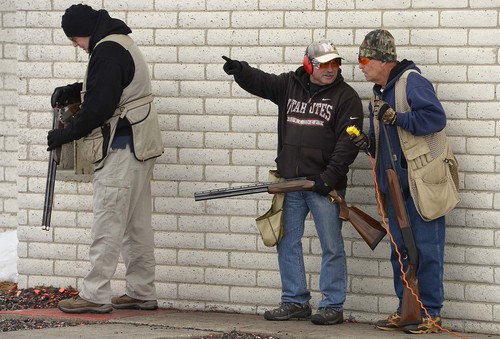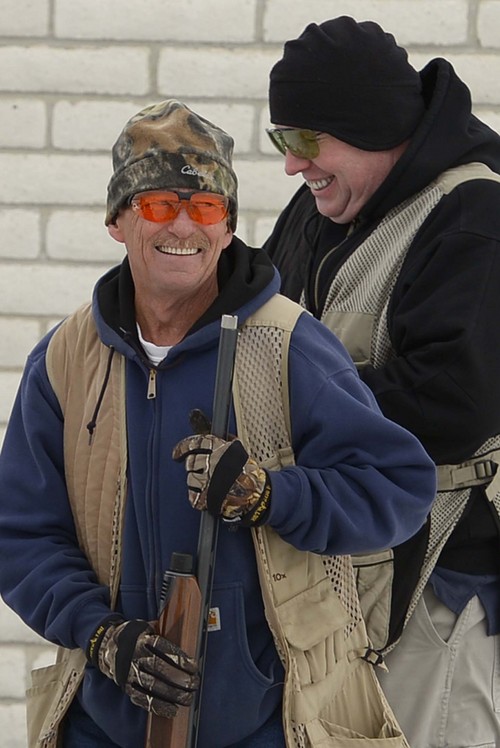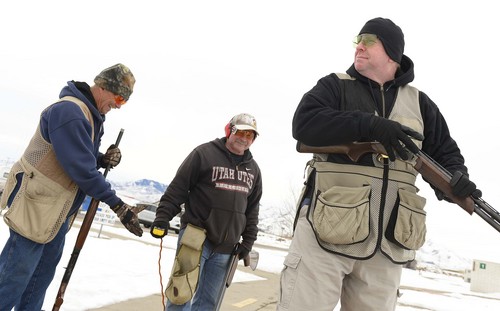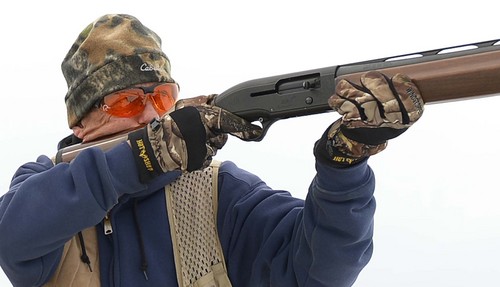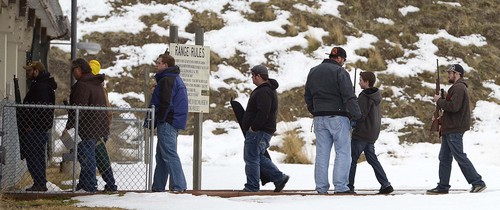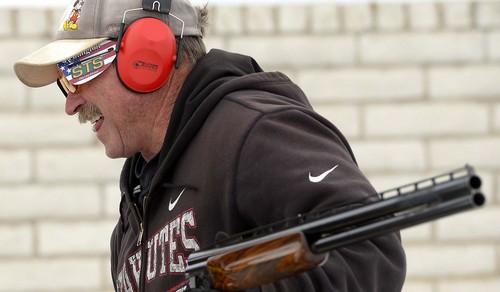This is an archived article that was published on sltrib.com in 2014, and information in the article may be outdated. It is provided only for personal research purposes and may not be reprinted.
On a typical weekend in Utah, hundreds if not thousands of people enjoy target shooting. They might use a shotgun to hit clay pigeons at a trap or skeet club. They might head to the nearest range to practice with a pistol or rifle. Many might just shoot a few tin cans out in the remote desert.
But, until recently, no one really knew the economic value of target shooting in Utah or in the United States.
The National Shooting Sports Foundation released results of an extensive national study at the recent SHOT Show in Las Vegas that shows that nationally there are 20.1 million target shooters who contribute nearly $23 billion a year to the economy and support more than 185,000 jobs.
In Utah, the report said there are 293,633 target shooters who spent 4.4 million days shooting and spend more than $243 million to enjoy their sport. That supports 2,563 jobs in the state.
"More people target shooting is good news for the industry, and it is equally good news for America's economy," said NSSF President and CEO Steve Sanetti.
Matt Delong, executive officer for the Utah State Rifle and Pistol Association, said more indoor shooting ranges are being built in the Salt Lake Valley. He said that while target shooting might be on the increase in Utah, he doesn't think there has been an increase in competitive shooting such as the kind he helps sponsor at the University of Utah.
"Competitive shooting, especially for kids, teaches mental discipline, self control, focus and concentration," he said. "Those are all skills that are important in the current economy. My sales pitch is that time invested in learning competitive shooting skills more than pays for itself in improved academic performance."
Brent Epperson, manager of the state-owned Lee Kay Center in Salt Lake City, said that he is seeing an increase in the number of shooters, especially since concerns about target shooting causing wildfires moved more people to certified shooting ranges.
At the Lee Kay Center, the state is investing $1.5 million into a new 80-station handgun and small rifle range after the original 35-station facility was destroyed in a fire.
"We should be upgrading the ranges we have and making them bigger and better, perhaps not adding more ranges," said Epperson.
James Curcuruto, director of industry research and analysis for the NSSF, said the shooting industry did not know the economic value of target shooting or its number of participants. When it released its hunting in America survey last year, he said someone asked about target shooting.
So the NSSF hired Southwick Associates, the Florida company it uses for the hunting survey that is released every five years, to find some answers.
Under the formula used, the number of target-shooting participants, including those purchasing guns for self-defense purposes, reported by the National Sporting Goods Association was used. That was combined with the average annual expenditure for firearms as reported by Southwick Associates' hunter survey and shooter survey service. Then estimates were produced for each type of shooting activity including rifle, handgun, shotgun and muzzleloader. Firearms sales to hunters were taken directly from the U.S. fish and Wildlife Service's 2011 National Survey of Fishing, Hunting and Wildlife-Associated Recreation, based on data collected by the U.S,. Census Bureau.
According to the report, Utah target shooters break down like this:
• 183,400 handgun
• 196,800 rifle
• 177,800 shotgun
• 40,000 muzzleloaders
They contribute $19.2 million in state and local taxes to the economy.
The NSSF said combined data from the Target Shooting in America and Hunting in America reports showed that target shooters and hunters together poured more than $110 billion into the nation's economy, fueling more than 866,000 jobs. Target shooters spent 446 million days enjoying their sport.
Curcuruto said this information can be used to show decisionmakers in state and local government the economic value of the sport.
"We would love to see more state-run shooting facilities," he said, adding that "bigger is better when dealing with politicians."
Trapshoot enthusiast Mark Greenhalgh of Nephi, who helped build a small 10-acre facility west of his town, said that he thinks the economic downturn has slowed growth in the sport. He thinks there are currently enough facilities in Utah to meet demand.
Curcuto said recent surveys have shown an increase of 34 to 40 million shooters, an 18 percent increase, since 2009.
"Now the NSSF's job is to make sure those new target shooters become old target shooters and that they go more than once," he said.
The report said that target shooters ($8.2 billion) and hunters ($8.4 billion) spend nearly equal amounts on equipment common to both pursuits, such as firearms, ammunition and accessories. Hunters tend to spend more on fuel, lodging and transportation.
"The Target Shooting in America and Hunting in America reports give us a more complete understanding of the economic importance of the shooting sports to America," Sanetti said. "We've long known about the recreational benefits of these activities, and now we know how much they contribute to our country's financial well-being."
The report showed that informal plinking (shooting non-standard targets such as tin cans or water bottles) and sighting-in were the two most popular activities enjoyed by handgun and rifle shooters. Shotgun users reporting sighting-in, sporting clays, trap and skeet shooting as among their most popular activities.
Twitter: @tribtomwharton


